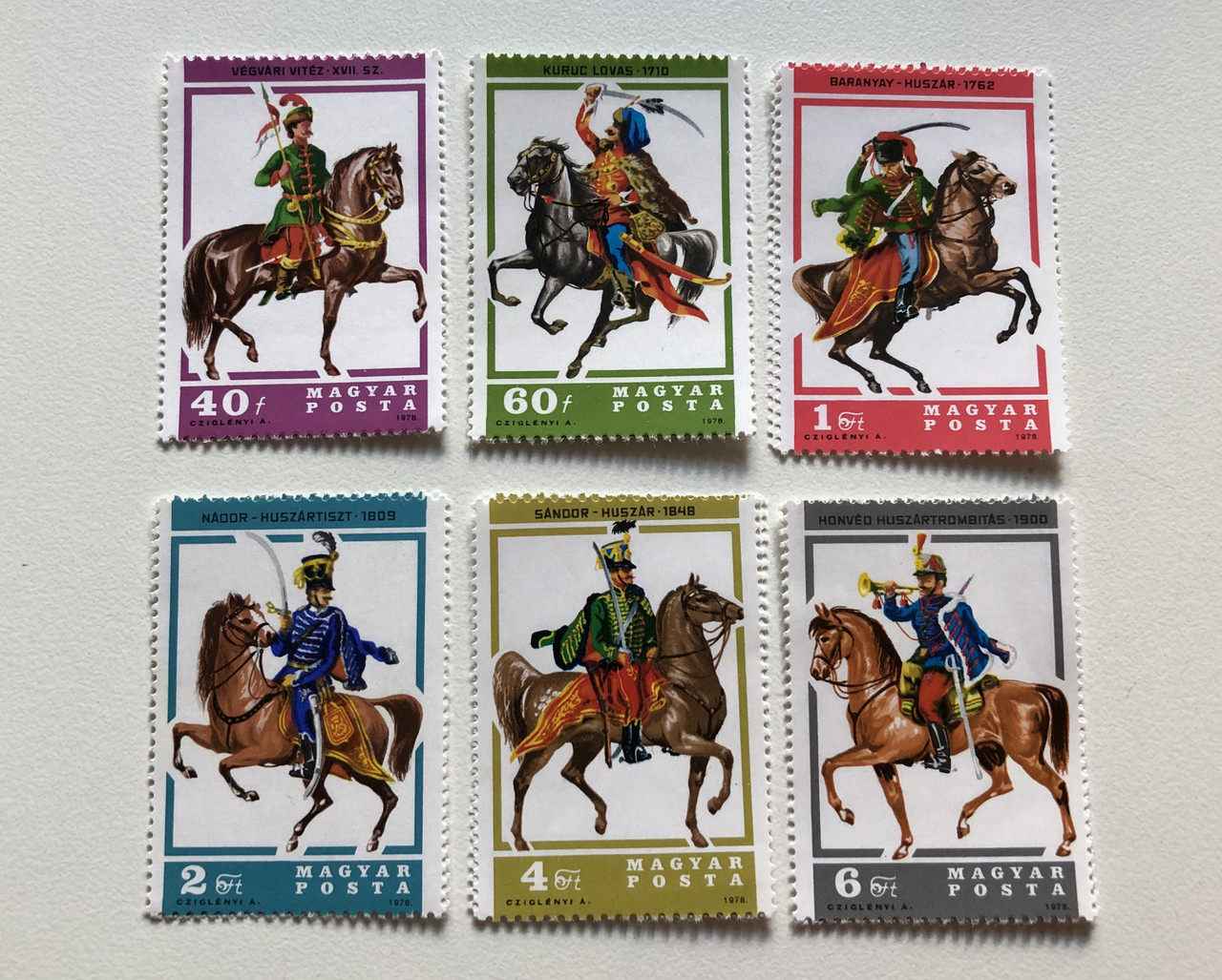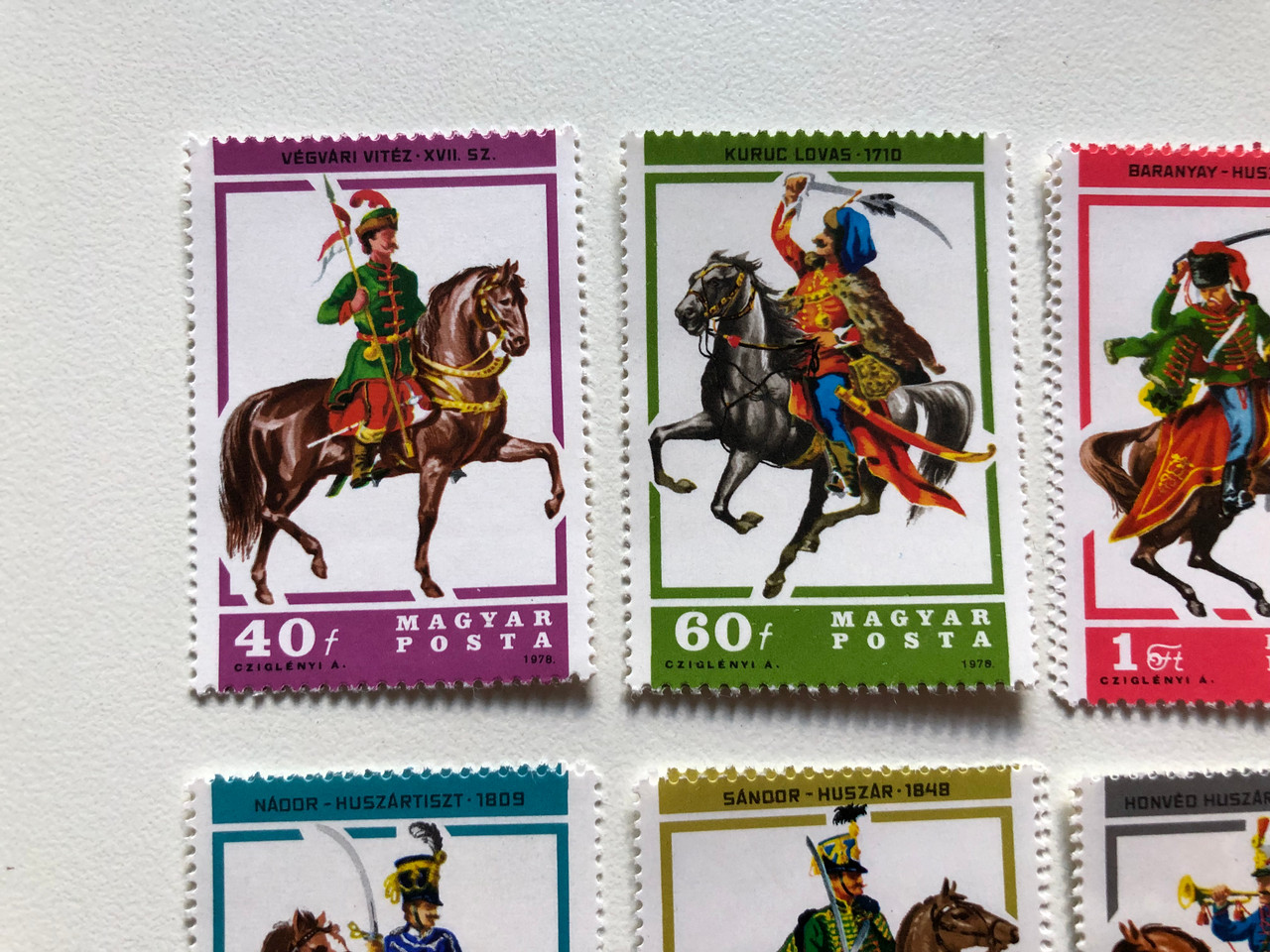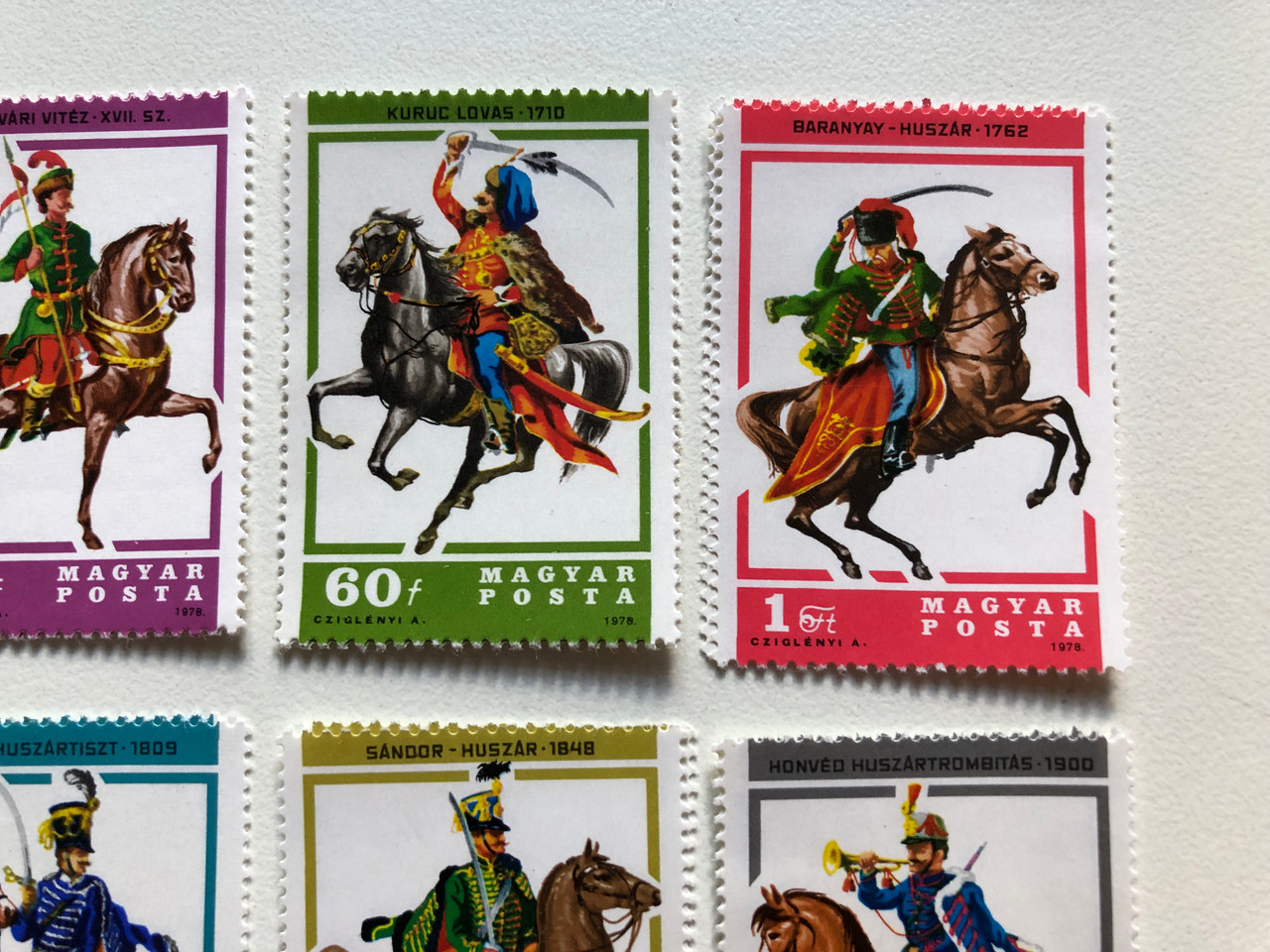Description
MAGYAR POSTA / CZIGLENYI A. 1978 / VÉGVÁRI VITÉZ-XVII. SZ. - KURUC LOVAS-1710 - BARANYAY-HUSZAR-1762 - NADOR-HUSZÁRTISZT-1809 - SANDOR-HUSZAR-1848 - HONVÉD HUSZARTROMBITAS 1900 / Hungarian Retro Historical Stamps
Made in Hungary
Postage stamp issued by Hungary in 1978. It features the artwork of Cziglény Antal, a Hungarian painter and illustrator who specialized in historical and military scenes. The text lists the names and dates of six types of Hungarian cavalrymen that are depicted on the stamp:
- Végvári vitéz: a border guard, a brave soldier who defended the frontier castles against the Ottoman Turks in the 16th and 17th centuries. The term means “hero of the border fortresses” and is often associated with Thury György, a famous várkapitány (castle captain) who died in 1551.
- Kuruc lovas: a rebel, a freedom fighter who participated in the anti-Habsburg uprisings led by Rákóczi Ferenc II and other kuruc leaders in the 18th century. The term means “crusader” and refers to their opposition to the Catholic Habsburgs.
- Baranyay-huszár: a hussar, a light cavalryman who wore a distinctive fur-trimmed jacket and a winged helmet. The term refers to Baranyay Ádám, a nobleman who raised a hussar regiment in 1762 and fought in the Seven Years’ War.
- Nádor-huszártiszt: a hussar officer, a commander of a hussar unit who served under the nádor (palatine), the highest-ranking official in Hungary after the king. The term refers to the nádor’s hussar regiment that was formed in 1809 and fought in the Napoleonic Wars.
- Sándor-huszár: a hussar, a cavalryman who wore a red jacket and a blue dolman (a short cloak) with yellow braids. The term refers to Sándor József, a prince of the House of Esterházy, who raised a hussar regiment in 1848 and fought in the Hungarian Revolution.
- Honvéd huszártrombitás: a honvéd, a soldier of the Hungarian national army that was established during the Hungarian Revolution of 1848-49. The term means “defender of the homeland” and refers to the patriotic spirit of the revolutionaries. A huszártrombitás was a bugler who played signals and commands for the hussars.
The stamp is part of a series of eight stamps that depict different aspects of Hungarian military history. The other stamps feature ancient warriors, medieval knights, infantrymen, artillerymen, pilots, paratroopers, and tankmen.




























